 Family reunions across state lines may seem difficult, but imagine the complications trying to unite international ones like mine, living in 3 different countries. It is never easy for a French-Normand father and Norwegian-American mother sans home, in a mountain hut in Switzerland to meet up their Franco-American kids.
Family reunions across state lines may seem difficult, but imagine the complications trying to unite international ones like mine, living in 3 different countries. It is never easy for a French-Normand father and Norwegian-American mother sans home, in a mountain hut in Switzerland to meet up their Franco-American kids.
Our daughter settled in the land of 10,000 lakes. Our son married a pretty British-Irish-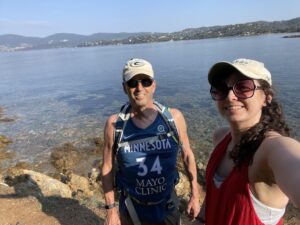 Ukrainian woman and moved to the countryside near Warwick, England. Recently, we united on the glamorous French Rivera. Whenever we gather, it is magical!
Ukrainian woman and moved to the countryside near Warwick, England. Recently, we united on the glamorous French Rivera. Whenever we gather, it is magical!
Our daughter flew to Europe for her spring vacation. We picked her up at the Geneva airport and drove south through France to La Croix-Valmer halfway between Le Lavandou and St. Tropez on the Cote D’Azur. Meanwhile, our son, Nic,  and daughter-in-law, Larissa, flew to Nice from England to be with us.
and daughter-in-law, Larissa, flew to Nice from England to be with us.
Our Airbnb was perched on the cliffs above the Mediterranean Sea on the Blue Coast, one of the world’s most famous coastlines offering sunshine, blue skies and the sparkling sea.
We woke up in the morning to birds singing from flowering bushes and the famous umbrella trees so prolific in southern France and to a spectacular view of the Bay of Cavalaire and the islands.
Every day was a feast for the senses
Each meal was a party for the palate.
Every moment was a priceless celebration.
For breakfast, over coffee, we enjoyed pain au chocolat, pain au raisin and patisseries from the bakery down the hill. At lunch, we savored salads, while Nic scarfed down giant Dagwood sized sandwiches on fresh baguettes.
Every evening, Gerald, our favorite French chef, offered the region’s finest fare. One night, we savored succulent lamb 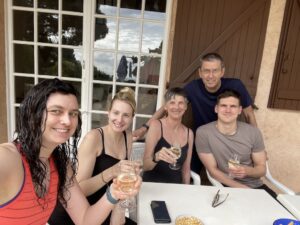 with risotto, the next night we enjoyed a rib of beef with green beans and Lari’s rosemary baked potatoes. The last evening, we dined on a giant sea bass in white wine and lemon butter.
with risotto, the next night we enjoyed a rib of beef with green beans and Lari’s rosemary baked potatoes. The last evening, we dined on a giant sea bass in white wine and lemon butter.
We started each dinner toasting one another with an aperitif of chilled Prosecco. We finished each meal with fresh fruits dipped in cream — currents, cherries, strawberries, blueberries, raspberries, a go-go. One night we splurged and enjoy a rich chocolate lava cake. We are all confessed chocoholics.
How Nat endured sticking to gluten free diet everyday amazed me. Although, I am also gluten intolerant, I cheated every meal.
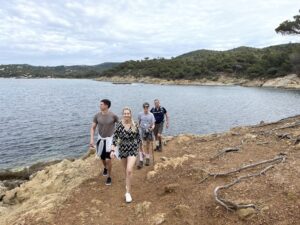 On sunny days, we hiked the rugged coastline, swam in the icy sea, read our Kindles and dozed on the beach.
On sunny days, we hiked the rugged coastline, swam in the icy sea, read our Kindles and dozed on the beach.
On our last day, Nic hugged his big sister goodbye .
“See you soon,” he said. “Maybe this summer, maybe at Christmas, or maybe next year at this time?”
For us, family reunions can never be taken for granted. Surely, we must somehow make this first family trip a new tradition.
Who knows where or when we will meet up again? A Frenchman, Gerald, is only allowed to stay in the USA for 90 days, as a British citizen Lari, due to a quirk in rules had her ESTA revoked, will not be allowed to enter the states for a couple years.
I regret that we live so far apart in separate countries each with its’ own red tape. Yet, we are lucky to be open-minded enough to embrace one another cultures, to have the wherewithal to afford travel and the knowledge to navigate crazy rules limiting border crossing.
Even now with the conveniences of modern travel and connections of technology, many immigrants, like my Norwegian grandparents, never had the chance to return to their homelands, due to immigration status, political asylum rules, and economic constraints.
On the way to the airport, before flying back to England, our daughter-in-law, Larissa, bless her little cotton socks, insisted Gerald stop off to check out the local real estate, and begged him to buy a place in southern France for us to meet up regularly.
One way or another, in spite of the challenges, obstacles and inconveniences, we will gather together again, somewhere, some way, somehow.
I will move mountains to make it happen!
Because that’s what mom’s do.
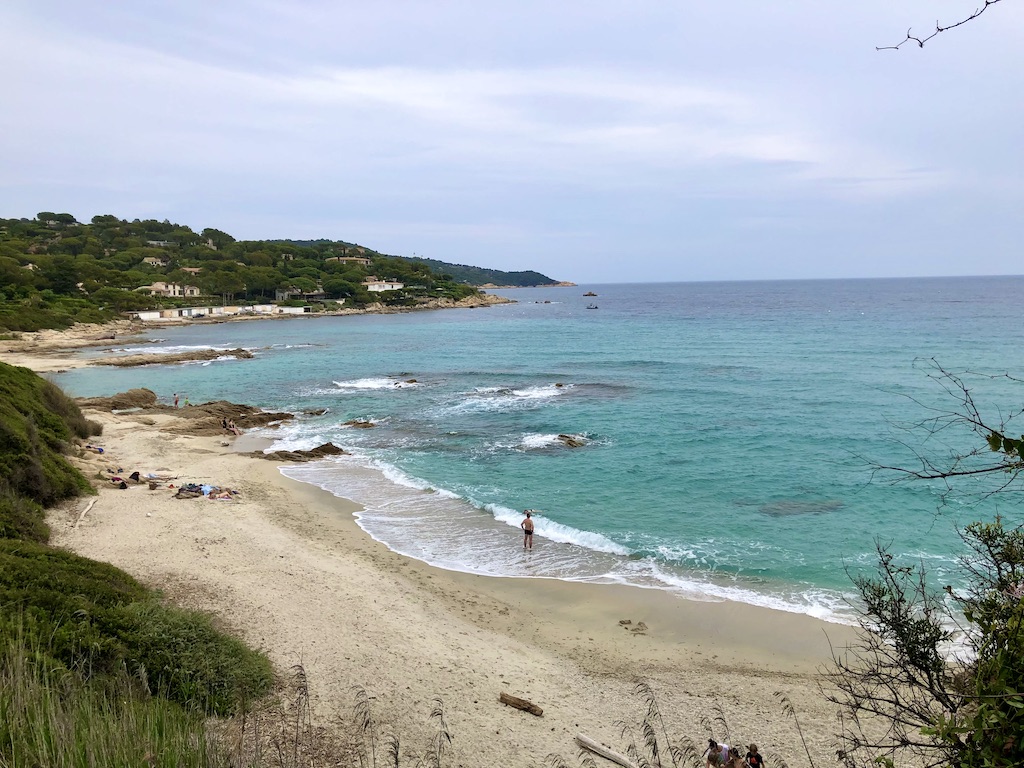
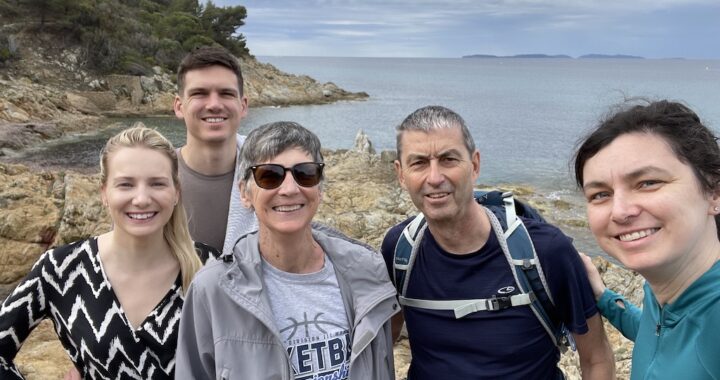
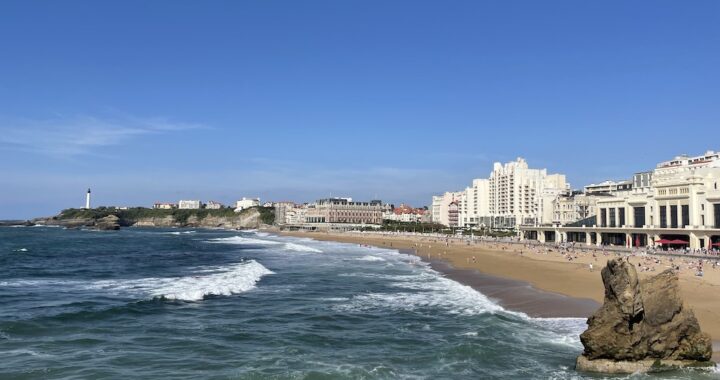
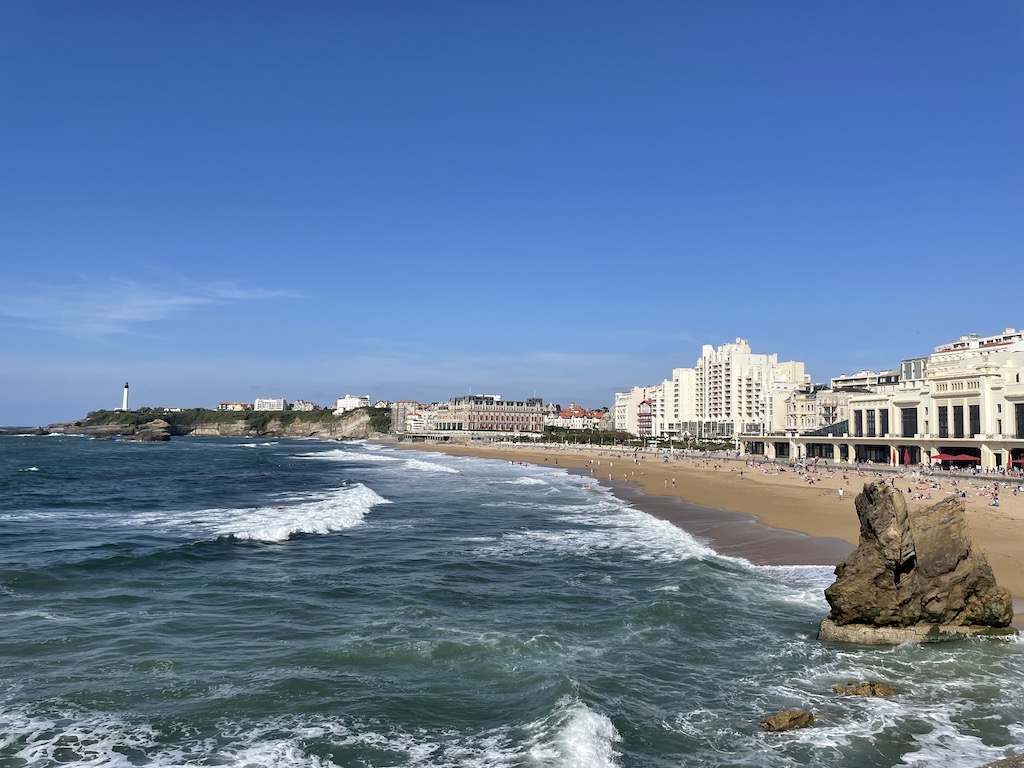
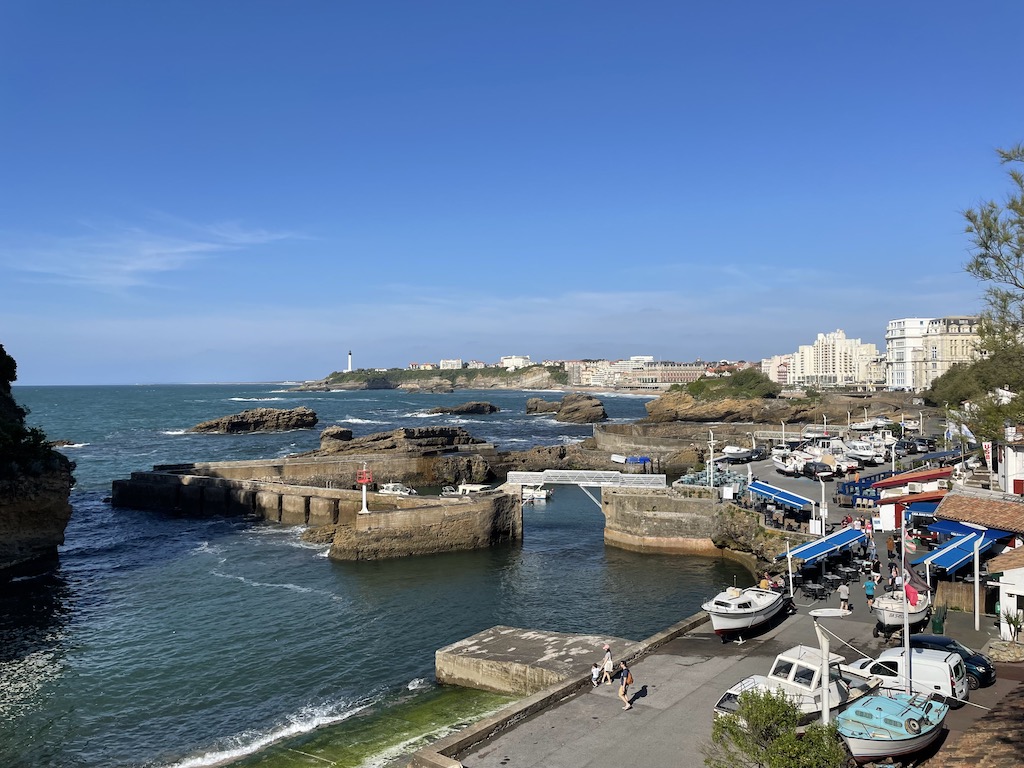
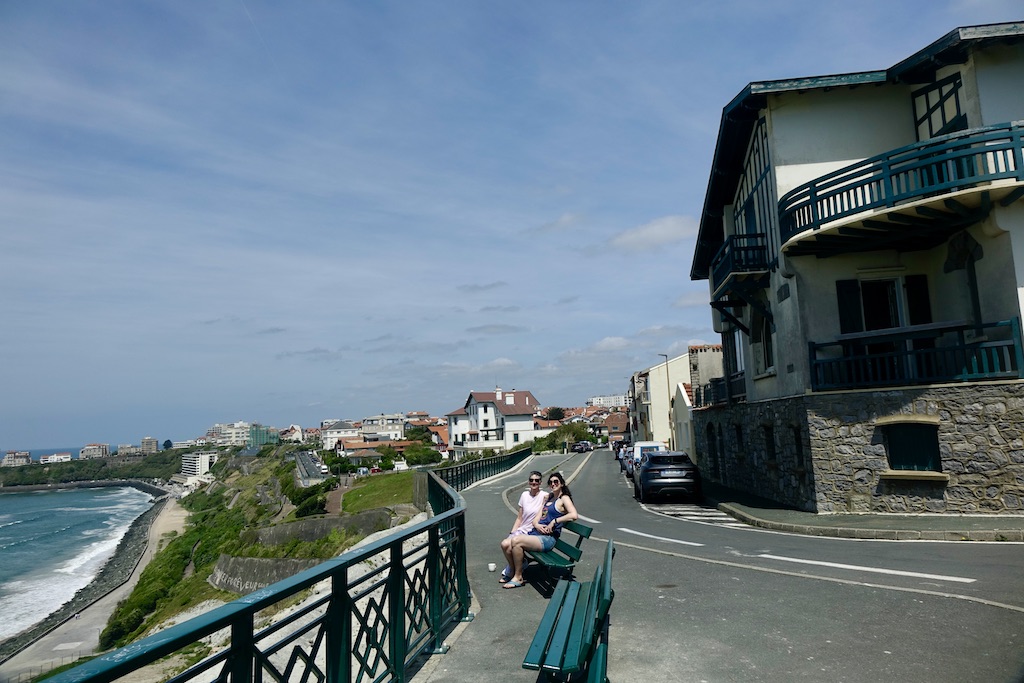
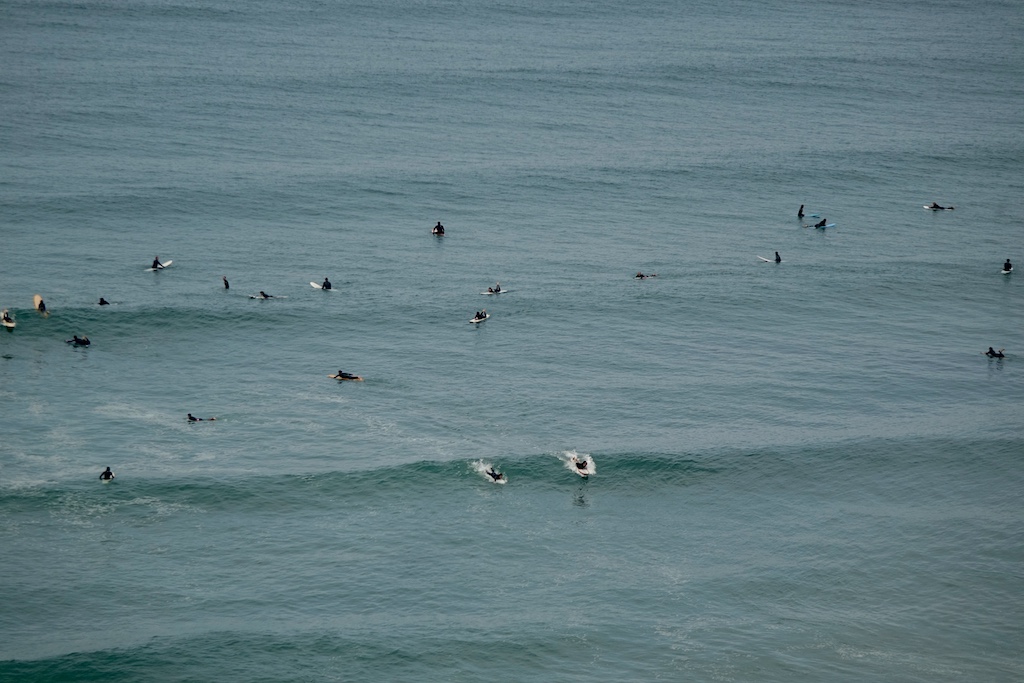
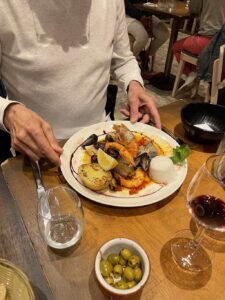 All the outdoor exercise whet our appetites, and there was no end to eateries along the coast and in the village.
All the outdoor exercise whet our appetites, and there was no end to eateries along the coast and in the village.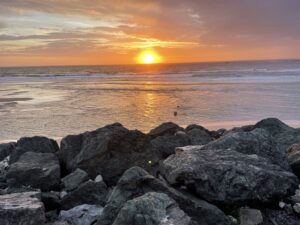
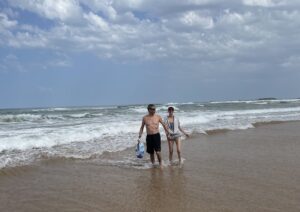

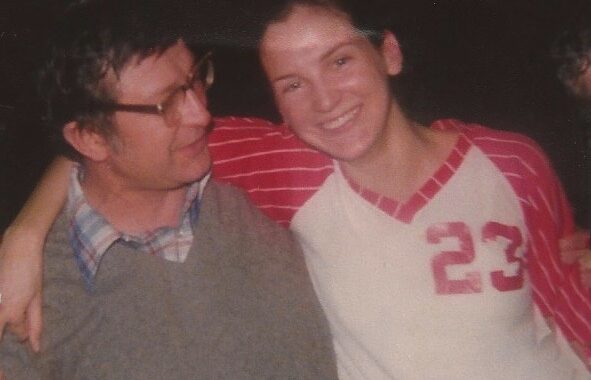
 If I pursued a career unheard of for women, moved abroad and rewrote my script after my dream collapsed in an accident, it is because of you, my pioneer dad, who believed in me every step of the way.
If I pursued a career unheard of for women, moved abroad and rewrote my script after my dream collapsed in an accident, it is because of you, my pioneer dad, who believed in me every step of the way.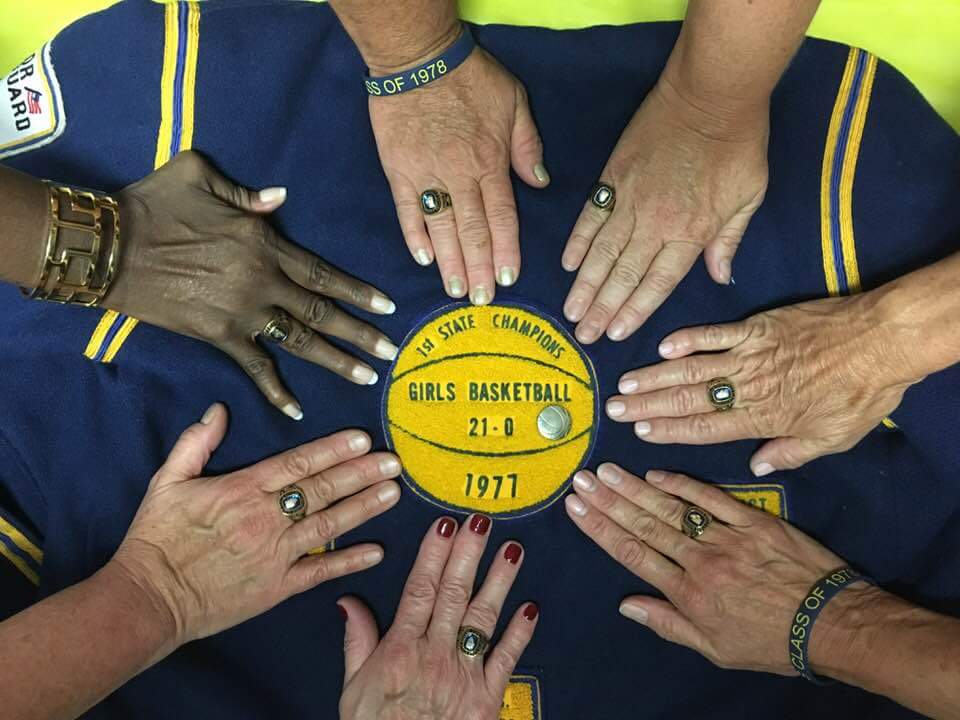
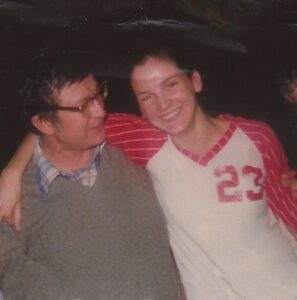
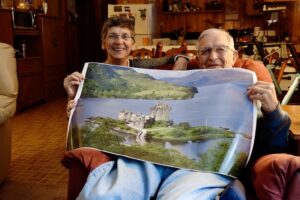 As the head of our McKinzie clan, you set the finest example of what it means to be an honorable leader, a strong chief, and a benevolent father.
As the head of our McKinzie clan, you set the finest example of what it means to be an honorable leader, a strong chief, and a benevolent father.
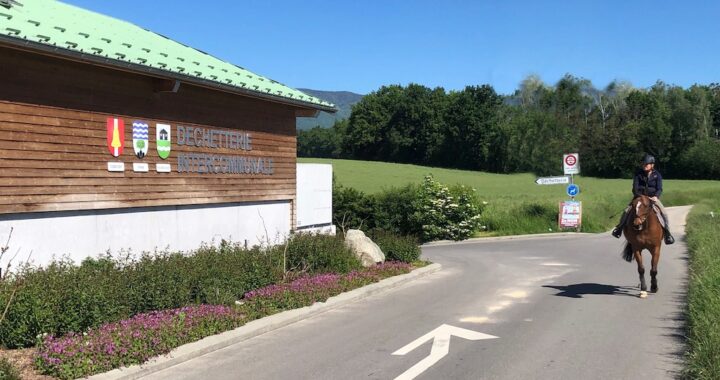
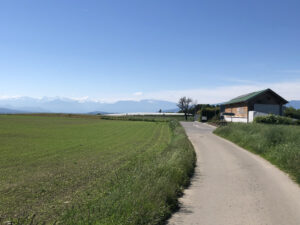 You would think after living in the world’s Most Tidy Country I would have adopted some of their clutter free lifestyle. Alas after residing in the same house in Switzerland for over 2 decades I have amassed a truck load of artifacts, books, T-shirts, photographs, medals, basketballs and other memorabilia.
You would think after living in the world’s Most Tidy Country I would have adopted some of their clutter free lifestyle. Alas after residing in the same house in Switzerland for over 2 decades I have amassed a truck load of artifacts, books, T-shirts, photographs, medals, basketballs and other memorabilia.

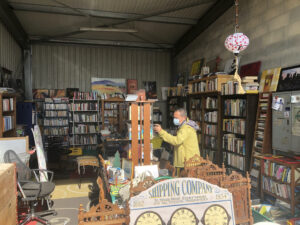 r living in a country so clean you could eat off the street, where wood piles are stacked as neatly as Jenga blocks and spotless garages contain nothing more than shiny new cars, I still wonder where the Swiss store junk?
r living in a country so clean you could eat off the street, where wood piles are stacked as neatly as Jenga blocks and spotless garages contain nothing more than shiny new cars, I still wonder where the Swiss store junk?

 After enduring winter’s fog obscuring our mountains, I rejoiced to see the sun rise over the Alps and Lake Geneva. Though daffodils dance with the promise of spring, people remain oppressed.
After enduring winter’s fog obscuring our mountains, I rejoiced to see the sun rise over the Alps and Lake Geneva. Though daffodils dance with the promise of spring, people remain oppressed.

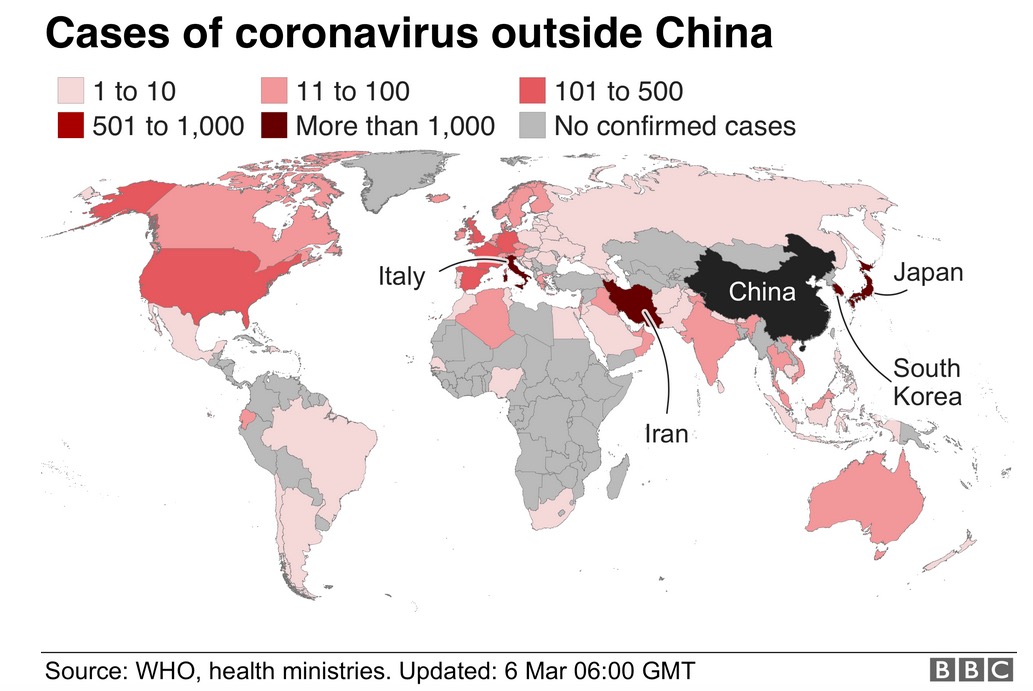
 In Switzerland when we first heard reports of the coronavirus in China, we only half listened, but when our neighbor Italy announced outbreaks, we were all ears.
In Switzerland when we first heard reports of the coronavirus in China, we only half listened, but when our neighbor Italy announced outbreaks, we were all ears.
 His book,
His book, 